Renoir is a Pissoir
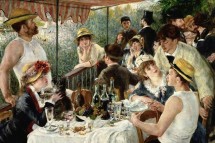
Renoir – Reviled and Revered (Dir. Phil Grabsky) (2015) at Palace Nova
There are so many suggestive connections in the impressionist and post-impressionist world. In this well-made and balanced documentary film, several connections are made that help us follow a radical turn (arguably, in retrospect, a wrong turn) in the course of visual art and demonstrates the technical challenges of representation and meaning. Beautifully photographed and tastefully edited, it actually enhances some of the work of Renoir, the major artist under review.
I don’t think the unnerving novelty of impressionism was more concisely and clearly put than by E. H. Gombrich: “outraged people would ask: ‘If I walk along the boulevard – do I look like this? Do I lose my legs, my eyes and my nose and turn into a shapeless blob?’ Once more it was their knowledge of what ‘belongs’ to a man which interfered with their judgment of what we really see. It took some time before the public learned that to appreciate an Impressionist painting one has to step back a few yards, and enjoy the miracle of seeing these puzzling patches suddenly fall into place and come to life before our eyes. To achieve this miracle, and to transfer the actual visual experience of the painter to the beholder, was the true aim of the Impressionists.”*
But whilst the Impressionist School exhorted painters to trust their eyes (hoping the public’s eyes, and trust, would follow), there came kilometres of mediocre canvasses; yards of smudges to conceal technical weakness, and the over-emphasis of light and shade one would attribute to a man with glaucoma. Key figures in the movement included Manet and, later, Cezanne, who had real talent and drive. But most of the impressionists were merely groping in the dark, confusing theory with practice, and daubs for nuance.

Enter Albert C Barnes, a American chemist who developed a medicine for gonorrhoea and sold the business before antibiotics and the Wall Street Crash. The Barnes Foundation of Philadelphia began in 1922 and Barnes immersed himself in the task of building a formidable collection, including the largest single gathering of the huge oeuvre of Pierre-Auguste Renoir (25/2/1841 – 3/12/1919), Barnes’ favourite, who painted some 7,000 works, about 6,990 of which were quite atrocious.
You can tell why Barnes (the chemist) was drawn to Cezanne, with his theorising and ‘scientific’ approach, but Renoir? Particularly as Barnes, who worked at but remained “puzzled” by art, seemingly passed up the artist’s more satisfying work, such as the Bal du Moulin de la Galette (below), with its impressive crowd-handling and not entirely successful play of dappled light, or the notorious ‘Rower’s Lunch’ (Luncheon of the Boating Party) (1880-81)** reproduced as the main image to this review.
Instead, he was drawn to the sugary scenes of the bourgeoisie, such as Girls at the Piano (below), or the hundreds of examples of chocolate-box porn, redolent of Rubens on a bad day. The film made the telling point that Renoir’s females were baby-faced, vacuous, empty-headed grotesques, with enormous and poorly-drawn bodies, striking poses so silly they seemed to mock the received stances of classical antiquity. Look at After the Bath, or, even worse, Les Baigneuses (both below).
It is no surprise that Pierre-Auguste was a raging misogynist, but did he have to paint so many simpering and virtually deformed women? It is also no surprise to learn that those poseurs, Matisse and Picasso, were big Renoir fans.
But even those painters would cavil at the later, ‘neo-classicist’ daubs, so overworked as to remove all semblance of life; so confected as to almost exist beyond human tolerance; fake as holy relics, but without the aesthetic appeal. Robert Hughes justly said, writing of Degas, that he had “never been a “popular” artist like the wholly inferior Auguste Renoir, whose Paris-Boston retrospective in 1985 beguiled the crowds and bored everyone else.”***
He is ultimately something of an enigma. A number of smart and thoughtful critics, curators and artists spoke in the film of how strange his pieces were. One artist had an interesting take on Renoir’s Children on the Beach of Guernesey (see above). He suggested that it was one of Renoir’s most valuable works, because it showed Renoir’s struggle with a new form. In the painting, clearly unfinished, there are detailed figures in the foreground but those bathing in the background are spectral smears, disastrous admissions of defeat which the commentator considered highly valuable. Without commenting on that pathology, we think this work, and a myriad others, bear out our low opinion of Renoir, which, curiously, he himself may have shared. On the day he died, after years of continuing to work under conditions of great physical adversity, he “gave up his paintbrush with the words, ‘I think I am beginning to understand something about it.'”^
** I confess my visceral contempt of Renoir began early. My parents had a washed-out print of Luncheon of the Boating Party, which the frame described as “The Rowers’ Lunch” and it continues to haunt me.
*** “Edgar Degas”, Time Magazine, 1988 (from Robert Hughes, Nothing if Not Critical, 1995).
^ The Private Lives of the Impressionists, by Sue Roe (2006), p. 269.
Leave a comment...
While your email address is required to post a comment, it will NOT be published.

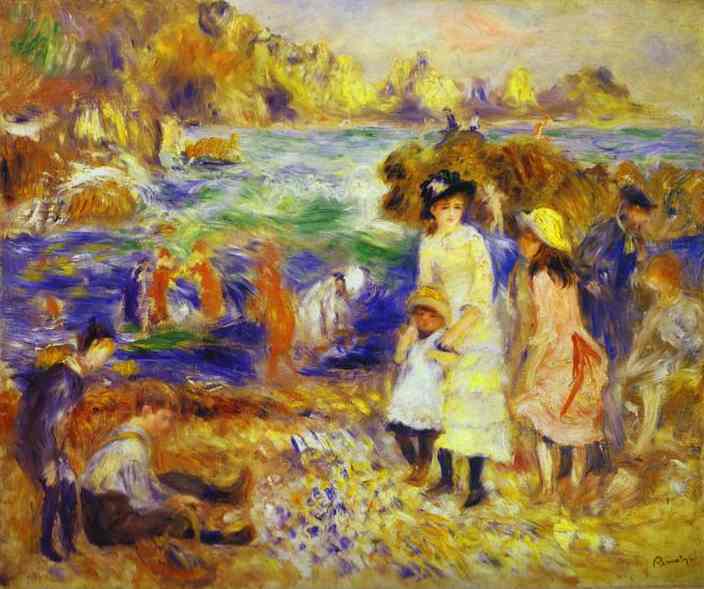
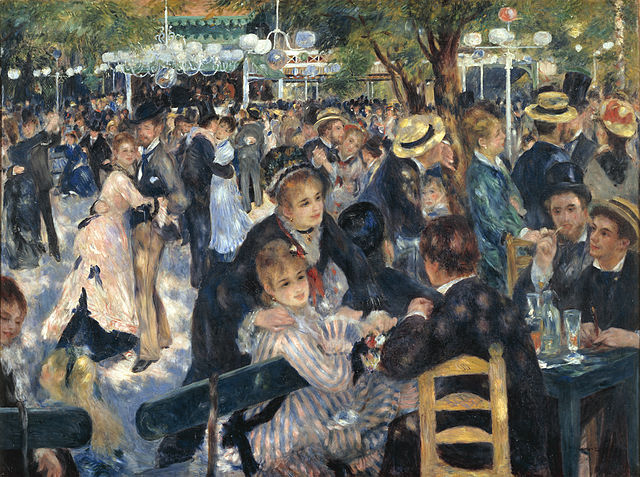
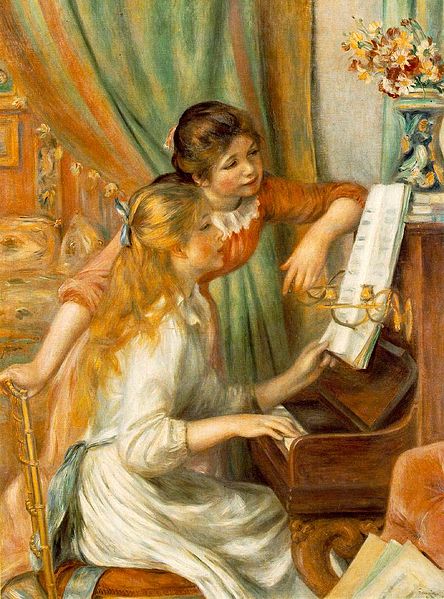
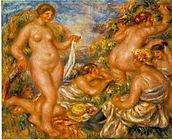
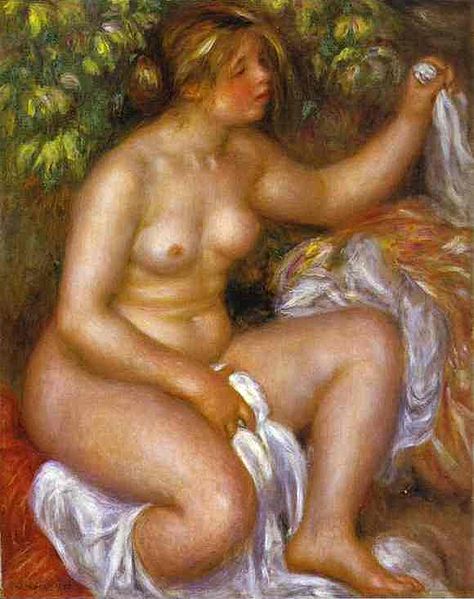
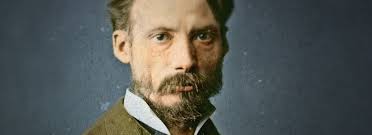

1 Comment